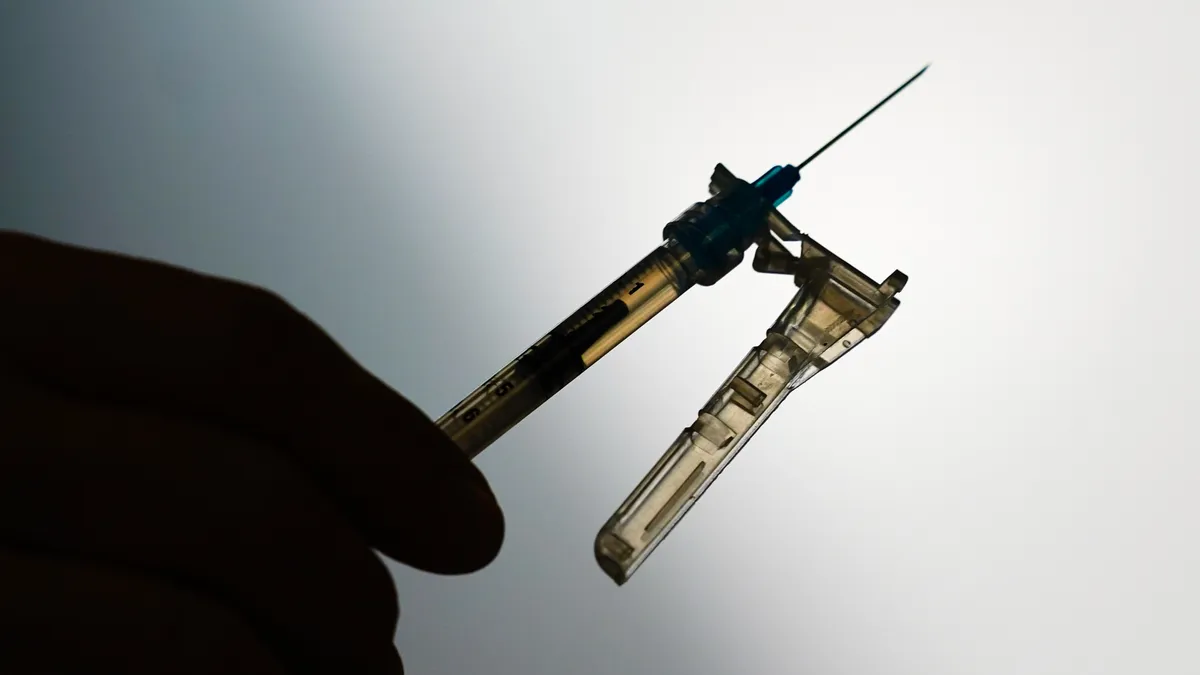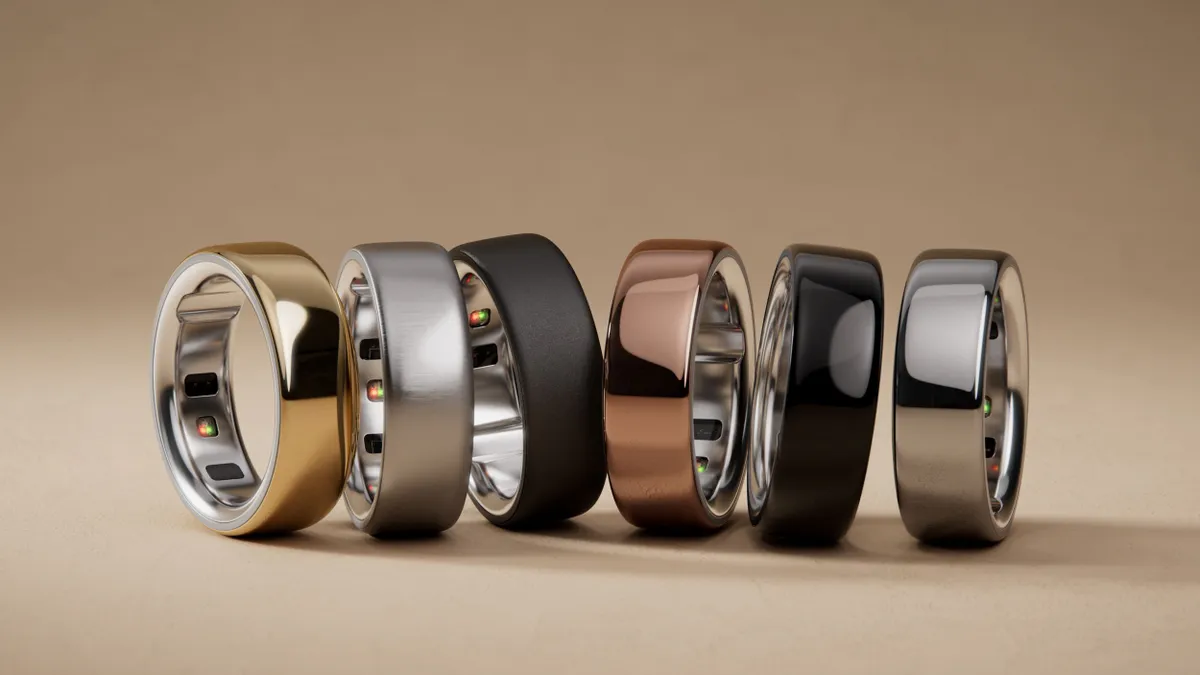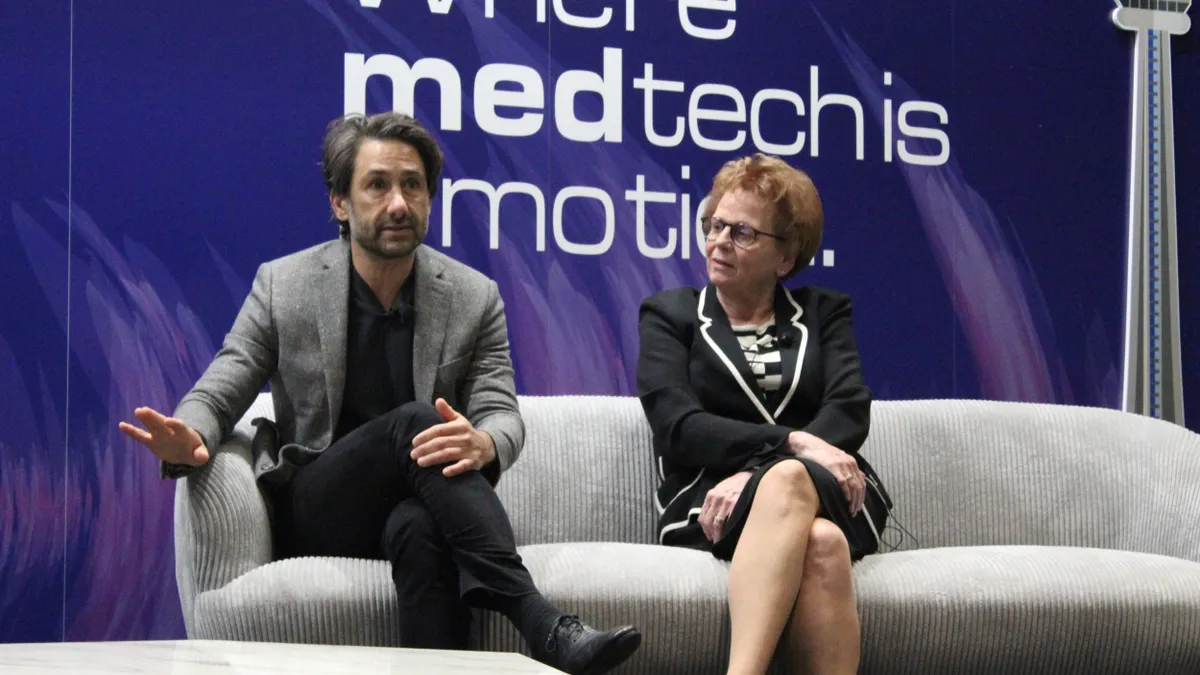While the pharmaceutical industry has hawked drugs in direct-to-consumer marketing for decades, investing billions of dollars annually, medical device companies have been slow to follow pharma's lead.
However, that seems to be changing. Device makers are increasingly turning to TV advertising, social media campaigns and digital marketing, spending hundreds of millions of dollars on U.S. marketing each year. It is part of a shift by the industry to a more consumer-focused approach, driven by a realization that advertising drives sales and the influence of online advertisement options.
"The rise of the internet and all the various social media platforms has drastically expanded the avenues that manufacturers can use to market their products," said Suzanne Levy Friedman, a senior associate with the law firm Hogan Lovells.
The medical device industry is 10 to 15 years behind pharma when it comes to DTC advertising, but spending has increased over the past three to four years, said Jay Zhu, Deloitte's medtech commercial strategy practice lead.
Companies like Abbott Laboratories, Boston Scientific and Medtronic have spent over $300 million on U.S. marketing each year since 2018, according to data provided to MedTech Dive by Kantar, a marketing tracking group.
The pace seems to be speeding up, even amid the pandemic.
The medical appliance and equipment category spent about $130 million on all U.S. advertising with the exception of social media in the first quarter of 2021, according to the data. That's more than double what was spent in the first quarter of 2020, and if similar spending trends hold up, the category would beat the total in each of the past three years by roughly $200 million.
Medtechs are investing more on U.S. DTC marketing
| 2018 | 2019 | 2020 | 1Q2021 | |
|---|---|---|---|---|
| Medical Appliances & Equipment | $332 million | $307 million | $310 million | $130 million |
SOURCE: Kantar, data does not include spending on social media
Diabetes tech company Dexcom, not included in that category, has outspent bigger players like Abbott, Boston Scientific and Medtronic since 2018, spending nearly $25 million last year on U.S. marketing.
Zhu said increased use of DTC marketing follows a broader healthcare industry trend where companies focus on the complete patient experience and not just clinical outcomes. In addition, the rise in high-deductible insurance is increasing patient decisionmaking discretion as the plans put them on the hook for more of the bill.
And the likes of Google, Amazon and Apple pushing in the space are also changing how legacy companies approach customers.
"A lot of the talent from those high-tech or other industries are joining the medtech industry. They are bringing new thinking of how to engage with patients [and] consumers," Zhu said. "That's also driving the adoption and increasing the focus on DTC."
Scott Tuhy, lead medical device analyst for Moody's Investors Service, said that DTC marketing helps companies reach patients and raise awareness about new products, but the advertising also gets patients more engaged and to actively seek out information or a specific product from their doctor.
"The fact that the patient really took the initiative [to ask for a specific device] really makes it more likely that they're going to not only get the product but stay on it," Tuhy said.
Engaging patients early and getting them into a company "funnel" is a key aspect of DTC advertising and for products ranging from continuous glucose monitors to orthopaedic and cardiac devices, according to Zhu.
Whether it's a net benefit for patients is an open question, but decades of pharmaceutical DTC has shown one thing: Advertising drives sales.
"Companies wouldn't be spending this much money unless they had data showing that this is effective, that it increases their profits," said Michael Carome, director of Public Citizen's health research group. "They know that this type of advertising works."
'Starting from scratch'
Boston Scientific was an early adopter of DTC advertising in medtech, airing a commercial for its Watchman heart device in select markets in 2017. According to a report from The Boston Globe, executives were torn on whether it was the correct approach but ultimately favored the idea with hopes of luring future users and promoting new treatments for atrial fibrillation.
Boston Scientific declined to speak with MedTech Dive for this article.
Flash forward to February, and CGM maker Dexcom reportedly spent millions of dollars on 30 seconds of air time during the Super Bowl, featuring pop star Nick Jonas.
CEO Kevin Sayer said the company's evolution to having a more DTC focus began several years ago and included reorganizing the marketing department and bringing in people outside the medical device world with a consumer-based mindset.
Dexcom has steadily grown its U.S. ad spending over the past three years, increasing from $8.4 million in 2018 to just under $25 million in 2020, and already nearly $10 million in the first quarter of this year, according to Kantar.
Adding new sales and marketing staff and using data and analytics to understand the impact of advertising will be crucial so companies do not just blindly throw away money on a TV ad or digital campaign and get little return on investment, according to Zhu.
"They have to think about it holistically, and then build a supporting capability around it to really make sure DTC is adding value," Zhu said.
Another key diabetes tech player, Insulet, is also moving into DTC.
Bret Christensen, Insulet's chief commercial officer, said the insulin pump maker has built out its DTC efforts over several years, investing in digital advertising, social media campaigns and, for the first time, TV advertising at the end of last year.
A primary reason was to increase patients' overall awareness of Insulet's products after the company discovered many patients in the diabetes community were not aware of recent innovations.
While there was no philosophical dilemma about whether DTC was appropriate, Insulet had to create an infrastructure.
"Starting from scratch, and never having run TV commercials at all, there were just a lot of capabilities we needed to build, people we needed to hire, third party agencies that we needed to get to guide us in the process," Christensen said. "And then the entire organization really is involved in the review of the material."
Insulet's spending has jumped from $573,000 in 2018 to $7.5 million in 2020, with nearly $3 million being spent in the first quarter of 2021, according to Kantar data.
The company is now running TV ads in the U.S. and U.K. and plans to further invest in DTC marketing for the upcoming launch of the Omnipod 5 pump.
The embrace of DTC marketing among diabetes tech companies may signal a broader shift in the medtech industry, where it eventually becomes a strategic necessity.
Dexcom and rival Abbott have both invested in DTC marketing for their CGM systems, and the ripple effects have changed the space.
"We saw the success [Dexcom and Abbott] were having with DTC," Christensen said. "We believe that although we're a piece of medical technology, we're moving into the consumer space. Meaning, the consumer — the patient — has a lot of influence, and is starting to have a lot of influence over physicians as to which insulin pump they're going to use."
Medtronic's diabetes group is making similar moves with plans to operate with a consumer electronics approach, where products are released or updated on a more annualized basis.
Want to make more informed decisions about food¹? #NowYouKnow. The #FreeStyleLibre 14 day is a continuous glucose monitoring #CGM system that helps you make informed decisions without the pain of a fingerstick*.
— Abbott FreeStyle (@FreeStyleDiabet) June 3, 2021
The FDA has Facebook, too
U.S. device advertising is regulated by the FDA and the Federal Trade Commission. But the line between product labeling and advertising is not clearly defined, creating some regulatory challenges.
According to Hogan Lovell's Friedman, the Food, Drug and Cosmetic Act defines medical device labeling but not advertising. Furthermore, FDA has the authority to regulate advertising for restricted devices, which are devices that can only be sold with authorization by a licensed practitioner or can only be used under specific, regulated circumstances, and the FTC regulates other devices. But those jurisdictional lines can also blur.
"If you're facilitating the sale of the product, generally, FDA is considered to have some level of jurisdiction," Friedman said.
Unlike drugmakers, medical device companies do not need to submit promotional materials to the FDA in a premarket application, according to Friedman. However, ads or other promotional materials cannot go beyond language and claims that are part of a product's labeling, which is reviewed by the agency as part of product applications.
If there are issues found with company claims or language in advertising materials, FDA usually notifies the company privately. The agency will then issue a public warning letter if the issues are not fixed.
FDA will also issue public warning letters for companies making more egregious false claims, an act Friedman said has significantly increased during the COVID-19 pandemic.
"Everything's just got to be perfect," Insulet's Christensen said, explaining that the company even debated where insulin pumps could be placed on actors in the TV commercial to ensure the visual message was compliant and accurate.
Product messaging can be difficult as well to squeeze into a 30-second time frame when accounting for the specificity of language and disclaimers.
"By the time you really put it all together, there's very little of the message you want to get out there that you can actually convey," Christensen said.
Companies are required to follow any claims or language approved as part of a product's label across social media platforms and their websites. Regulations also change by country, so all materials — social media posts and accounts, broadcast and digital ads or websites — have to be compliant with that specific market's regulations.
"FDA has computers, too, and they can reach your website more easily than they can attend a conference or a trade show or be in the doctor's office," Friedman said.
Broadcast backlash
There are risks, of course, to going to patients directly for both industry and patients.
After Dexcom's Super Bowl commercial aired, patients raised issues about cost and access. Dexcom's CEO deflected the criticism, arguing the investment brought attention to the diabetes tech space, which will eventually help lower costs and increase access.
However, some still question if the potentially millions of dollars spent on advertising campaigns and commercials could be better used.
The fact that a diabetes device company can afford to air a $5 million+ commercial while millions with diabetes struggle to afford their insulin is EXACTLY why advocates point out that these companies spend more on marketing than access. #insulin4all #dexcom #superbowl
— Justin Mendoza, MPH (@JustinDMendoza) February 2, 2021
Decades of pharmaceutical advertising have produced some research that DTC has a detrimental effect on patient care, by spurring patients to demand the priciest new products, and not necessarily the safest, most effective or most appropriate.
Pharmaceutical companies spent roughly $18 billion on advertising between 2016 and 2018 on 553 drugs, according to a report from the federal watchdog Government Accountability Office. However, the majority of that money was spent on marketing for brand names or newer drugs.
Focusing on newer drugs inevitably will boost healthcare spending because of higher prices, but also increase usage of drugs with less safety information, according to Public Citizen's Carome.
"From a public health standpoint, overall, the downsides far outweigh the upsides," Carome argued. "In an ideal world, we wouldn't have such direct-to-consumer advertising. But that's not the world we live in."
Not every medical device company will need to focus on DTC marketing and make the investment and structural changes required, such as companies that primarily make products for the healthcare industry like medical imaging machines or surgical tools. However, DTC spending is catching on across the industry.
Christensen said the trend will likely increase more for companies with lifestyle products, such as CGMs or insulin pumps, where patients or users have a larger say as to which product they prefer.
"We believe awareness is key because the consumer is so powerful," Christensen said. "If your product meets that [lifestyle] definition, I do think DTC is worthwhile."





















